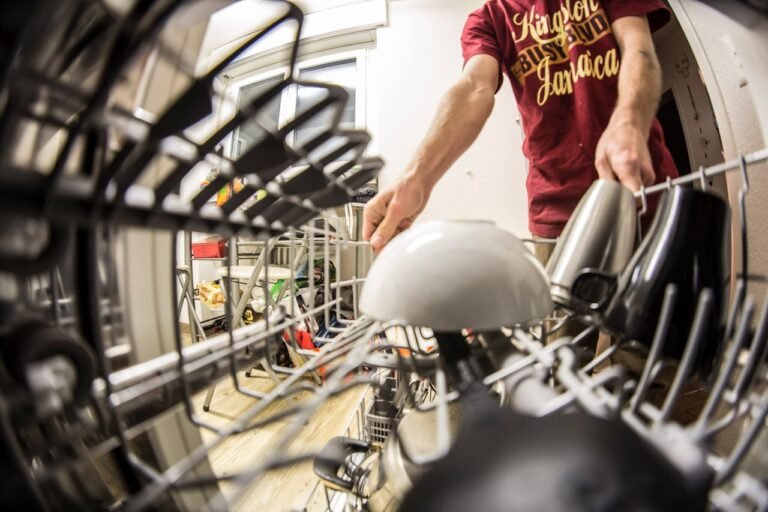Washing Machines vs Hand Washing: Which Is Greener for the Environment?
Laundry feels like a small thing until you put numbers beside it. Washing clothes is something almost every household does, and the way we wash — by hand or in a machine — adds up across millions of homes. That matters for water use, energy bills, greenhouse gas emissions, microplastic pollution and even who carries the physical burden of cleaning clothes. According to the European Commission, in 2020 household washing machines in the EU washed about 121 billion kilograms of laundry and used roughly 1,161 billion litres of water, which works out to about 9.6 litres of water per kilogram of laundry on average.
Those big numbers tell two stories at once. On the one hand, modern washing machines and tighter rules on appliance design have cut the water and electricity each wash uses, so machines can be efficient when used the right way. A report by the Energy Saving Trust in 2025 stresses that wash temperature and filling the drum properly are the single most important behaviours to lower energy use: colder programmes and full loads save the most energy.
On the other hand, new research shows machines can release far more tiny synthetic fibres into wastewater than careful hand-washing — a source of microplastic pollution that accumulates through city drains and into seas. The American Chemical Society summarised a 2023 study that found machine laundering released far more microplastic fragments by number and mass than simple hand-washing methods.

What the Science and Statistics Say
Numbers from life-cycle studies and public agencies give a clear, if slightly complex, picture: washing machines, when modern and used well, usually produce lower per-kilogram greenhouse gas emissions and can use less water than many casual hand-washing methods; but machine washing tends to shed more microfibers from synthetic clothes, and poor machine hygiene or improper cycles can undermine benefits.
A quick snapshot of the data helps:
| Metric | Typical machine value | Hand-washing note | Source |
|---|---|---|---|
| Water per kg laundry | ~9–10 L/kg (EU average ~9.6 L/kg) | Highly variable; can be less if people use small buckets and reuse rinse water, or much more if repeated rinses are used. | According to the European Commission, 2024. |
| Energy (electricity) per kg | Modern EU machines ~0.14 kWh/kg (2020 average) | Hand-washing needs hot water supply — heating water at the tap can often use more energy than machine heating on eco cycles. | ✓✓ |
| Microplastic release (synthetic fabrics) | Machine washing can release tens of thousands of microfibers per small fabric sample | Hand-washing dramatically reduced number and mass of fibres in controlled tests. | According to the American Chemical Society press release summarising a 2023 study. |
| Hygiene / pathogen reduction | Effective at lower temperatures with correct detergent and drying; some pathogens require higher temperatures or sanitizers | Hand-washing can be effective for light soiling, but may not achieve the same microbial reductions unless hot water and strong agitation are used. | Laundry hygiene reviews and infection-risk studies, 2021–2023. |
| Overall environmental impact (LCA) | Strongly influenced by temperature, detergent dose, number of uses per garment and energy source; modern eco machines lower per-wear impact | Hand-washing can reduce microfiber emissions but may increase labor, water re-use complexity and, in some cases, total energy from heating water. | Toward sustainable household laundry (Tomšič et al.), 2023. |
Those numbers reveal two practical truths: first, the environmental footprint of laundering isn’t a simple “machine good/hand bad” divide — it depends on how each method is used. Second, the biggest gains often come from behaviour changes that work with machines: washing in cold water, running full loads, and choosing efficient machines and detergents.
People’s Experiences and Trade-offs
The debate plays out differently across lived lives. For many households, the washing machine is a time-and-health lifeline. In places with reliable electricity and affordable modern machines, washing machines free up hours of manual labour and reduce the long-term physical toll of hand-scrubbing. A 2024 feature on global laundry burdens reported families spending as much as 20 hours a week hand-washing in some communities — time mostly taken by women and girls that limits schooling and paid work.
At the same time, voices from wealthier countries confess that modern convenience brings new pressures. A personal essay in The Guardian in 2024 described the author’s anxiety about using the machine inefficiently and the environmental guilt of frequent washing, especially of items that could be aired or spot-cleaned instead. That piece highlighted how emotional and social pressures — what people expect to look or smell like — drive over-washing.
Some people also choose hand-washing on purpose. Some do it to reduce microfiber pollution, as studies have shown that delicate manual washing sheds fewer fibres than machine cycles. Others hand-wash because machines aren’t affordable or available, or because cultural traditions value hand care for certain garments. These choices are real and reasonable; their environmental advantage in controlling microfibre pollution is also genuine, but they are not automatically “greener” in every respect. The reality is a balancing act across water, energy, chemical use, pollution, labour, and wellbeing.

Practical Advice: How Machines Can Be Greener — and When Hand Washing Wins
If your goal is to reduce environmental harm while keeping clothes clean, here’s how to make the best choice in the real world.
Wash smarter, not harder: run full loads (or the correct eco half-load programme when you must), choose cold or 20–30°C cycles for lightly soiled clothes, and avoid needless repeats. According to the Energy Saving Trust, lower wash temperatures and correct load sizing are the cheapest, highest-impact changes households can make.
Choose efficient machines and maintain them. Newer, well-labelled models use far less water and electricity than older ones; the European Ecodesign rules slashed typical water and electricity use per kilogram of laundry in recent decades. If your machine is old or smells, service and clean it: poor maintenance can force rewashes and worsen emissions per clean garment.
Cut microfiber pollution where you can. If you wear synthetic garments, filter your laundry effluent by installing a certified microfiber filter on your washing machine or in the drain. Wash synthetics less often and, when possible, inside a dedicated bag. Several studies suggest that hand-washing sheds fewer fibres for the same small sample — so for delicate synthetics you value, hand-washing can be a targeted strategy to reduce microfiber loss.
Make detergent and cycle choices wisely. A 2023 LCA study on household laundry found that detergent dose and formulation have a major impact on environmental outcomes. Using the right amount of an effective detergent and choosing formulations designed for low-temperature cleaning can reduce the need for hotter, more resource-intensive cycles.
Protect health without wasting resources. For everyday clothing, modern detergents and correct drying usually control microbes well. When items are exceptionally contaminated (sick-care laundry, heavy bodily fluids), consider higher temperatures or sanitising additives and handle soiled items with gloves — studies on laundry hygiene show that the major infection risk comes from handling dirty textiles, not the washing process itself, so good hand-hygiene while sorting matters.
Use fewer washes overall. The simplest carbon and water saving is to wash less. Airing, spot-cleaning, rotating wardrobes and trusting natural fibres that resist odour can cut washes per item dramatically. Brands and consumer groups increasingly recommend fewer washes for items like jeans and outerwear, with clear environmental benefits.
Context matters. In water-scarce areas with no grid electricity, careful hand-washing with rinse-water reuse and low-impact soap can be vastly better than an old, inefficient machine that uses a lot of water and dirty fuel to heat it. In dense, grid-connected cities with strict wastewater treatment, a modern machine with a microfiber filter and sensible use likely has a lower footprint. Policy and purchase decisions should reflect local realities, not blanket rules.
Conclsion
Machines can beat hand-washing on several environmental fronts when they are modern, well-used and paired with smart behaviour. But hand-washing has clear, measurable advantages in microfiber release and in particular contexts where machines are unavailable or poorly maintained. The best answer is pragmatic: use the right tool for the job, change behaviours that waste energy and water, and invest in cleaner technology and systems (microfiber filters, better detergents, efficient machines) that reduce the trade-offs we face today.







